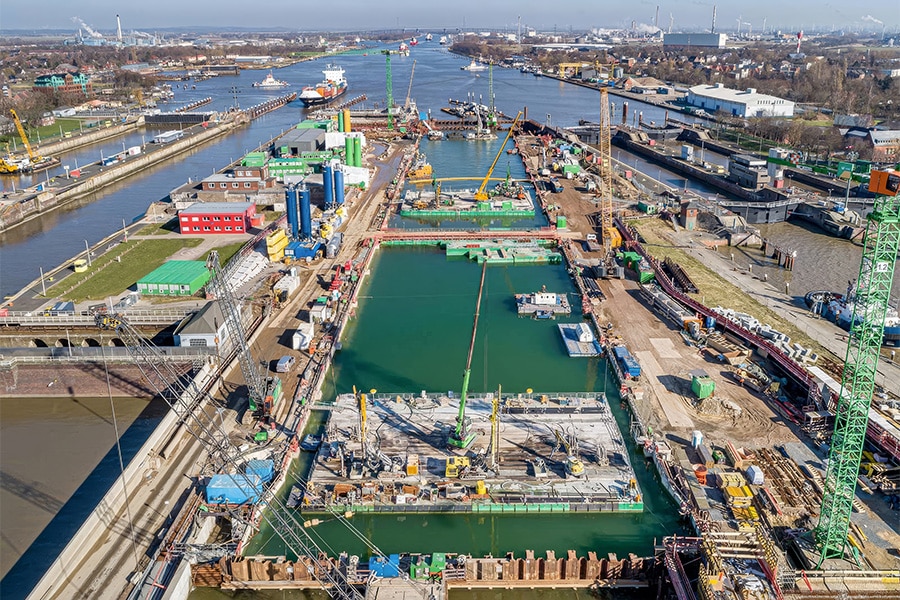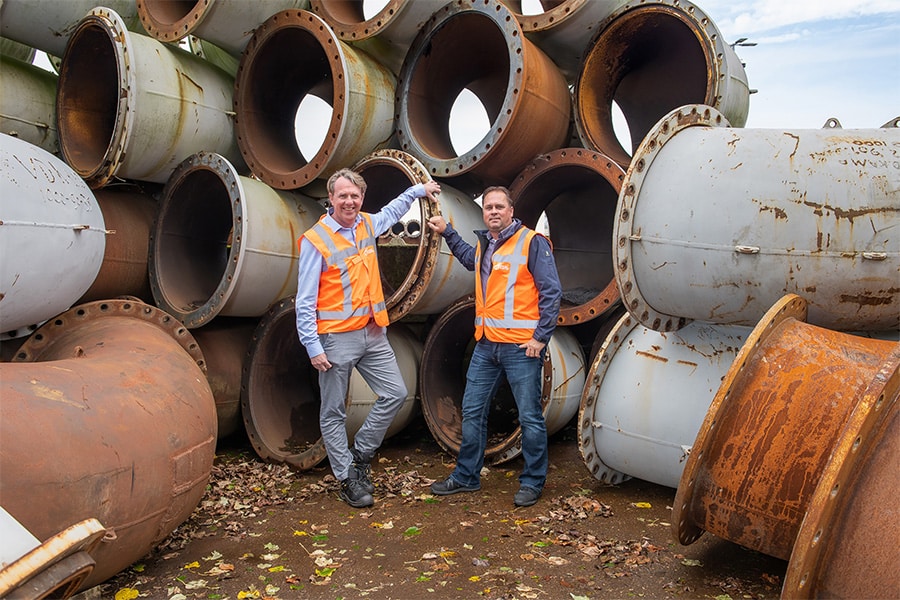
Durable with steel
The construction of the Selective Withdrawal at the sea lock in IJmuiden requires approximately 9,500 tons of steel sheet piles, combi piles and tubular piles. For the supply, part of which is also for temporary application, Van Hattum en Blankevoort and ArcelorMittal entered into a partnership at an early stage. The use of combi walls in temporary solutions is fairly unique and above all extremely sustainable.
The IJmuiden lock complex is also familiar territory for ArcelorMittal. The steel manufacturer was previously responsible for the steel supplies in the construction of the world's largest sea lock. "The Selective Extraction is at least as special for us, not only because of the quantity, but also given the cooperation and contracting in a period of fiercely fluctuating prices," says Patrick Mulders, Technical Sales Manager at ArcelorMittal. "Meanwhile, we have already delivered a number of combi walls in different sizes ranging from 1020 to 1620 sections, some 6,600 tons of tubular piles and another 2,800 tons of sheet piles. And all in different phases."
Sheet piling from scrap metal
The biggest challenge here, according to Patrick, was mainly in the short time frame between final design, production and delivery. "In the preliminary phase, extensive attention was paid to crystallizing the design. As a result, we had to be short on time with production. In itself not a problem given the size of our organization, but it does have to be 'just' put on the right track." All sheet piles (AZ sections) were produced from scrap in the electric arc furnace of the ArcelorMittal plant in Luxembourg. "All recycled steel, therefore, including the heaviest AZ 52-700 profile," Patrick emphasizes. "The profiles have also been optimized in terms of weight, which further provides an additional CO2-savings. After all, sustainability often goes by the ton. The less weight, the less CO2-emissions."

Lock teller
The 6,600 tons of tubular piles for the Selective Extraction were brought in from the production site in Dintelmond. "This is mainly new production with small part converted to stock for faster delivery," Patrick explains. In order to demonstrate that the combi wall has been assembled correctly, ArcelorMittal has fitted a number of tubes with the Dixeran lock marking system developed in-house. "Locks are welded to the tubular piles that, together with the sheet piling that is later installed, form the combi wall. On the underside of a number of locks is the lock teller, nothing more than a pin through the pipe and the lock with a sensor attached to it whose wiring runs up through the pipe. The sensor is connected to a control box. When the sheet pile is at depth and properly installed, the pin breaks off and the sensor emits a signal to the surface. Dixeran is thus a reliable discontinuous instrument for testing whether the sheet piling has not run out of lock. However, it does not indicate the height at which the possible lock opening occurs. To better test this, we from ArcelorMittal have also developed a continuous system with approach switches, called AM-SIS. The latter system has been extensively tested for reliability and is now being used in projects."
In-house coating facility
For about three years now, ArcelorMittal has had its own coating facility in Dintelmond. "Coating in-house allows us to optimize our logistics and make our production process more sustainable," Patrick rightly states. "For the Selective Withdrawal, we coated the top 3 meters of all sheet pile walls and piles." Finally, what makes this project unique is that not only is the sheet piling pulled at the end of the project, but also the portion of the combi piling for the construction pit. "Only the bottom 10 meters remain, the rest is cut off and can be reused. A combi wall as a temporary application is not very common." However, Patrick expects it to become more common in the future for sustainability reasons.
Heeft u vragen over dit artikel, project of product?
Neem dan rechtstreeks contact op met ArcelorMittal Projects Europe B.V..
 Contact opnemen
Contact opnemen




